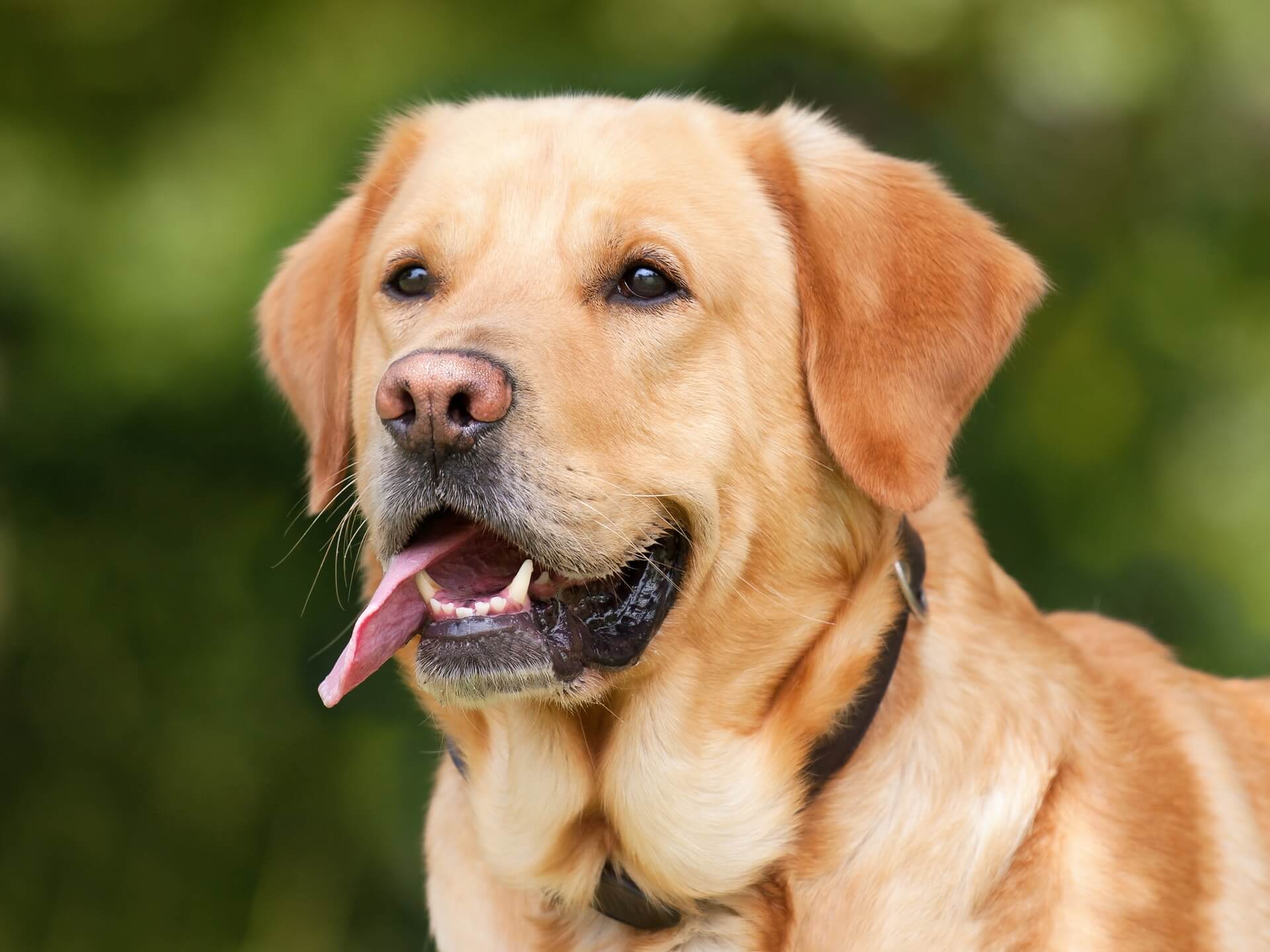
Labrador Retriever
Origin: Also known by the name of Labrador or Lab, this breed of dogs hails from the island of Newfoundland, Canada. Known initially as St. John’s Dog, Labs were found in the early 1700s. The fishermen used to own them, spending their days working with them, bringing back the fish who had escaped hooks, hunting in water, and pulling in fish-filled nets. The American Kennel Club recognized them as purebred dogs in 1917. They became popular in the late 1900s due to their versatility, looks, and obedient nature.
Size: The Labrador Males stand 22.5 to 24.5 inches at the shoulder and weigh around 65-80 pounds. The Labrador female has a shoulder height of 21.5 to 23.5 inches and weighs approximately 55-70 pounds. They are generally golden, brown, black, and chocolate with brown or hazel eyes, a large nose, and a thick tail.
Coat: A Labrador has a double coat which means they have two layers of coat. It has a short, thick, and straight top layer called the “the Guard Coat.” Below that, you’ll find a softer water-resistant layer which is called “the undercoat”. The upper layer is slightly more wiry and corrosive. In contrast, the under layer is an excellent insulator that protects your dog from the excessive coat in the winter seasons and keeps them cool in the summer season.
Temperament: Labradors are playful and intelligent dogs with a friendly temperament that makes them an ideal choice for novice owners. They are one of the most sweet-natured breeds, always eager to please people, and are good with other pets as well. They are easy to train, and once appropriately trained, they are obedient and warm-hearted. They need daily exercise and physical activity to keep them occupied as they have a lot of energy and excitement. They become destructive sometimes if left alone for a longer time. A Labrador can make a good watchdog as they are loyal and super active and have a keen sense of smell.
Care: The adorable Labs are indoor dogs are prefer to be around their family. They need both physical and mental activity to keep them occupied. Daily 30-40 minutes of walk or different physical activities can maintain their energy requirements. A Labrador requires brushing almost daily as they do shed. Ensure to brush the coat daily or with a gap of one day to keep them clean and healthy. Brushing your Lab’s teeth twice a week is necessary to remove the tartar buildup and the bacteria inside the mouth. Trim your pet’s nails once or twice a month as needed as trimmed nails keep the feet in a healthy condition.
Health Concerns: Labrador Retrievers love to eat, so they become obese if they are overfed. Hip and Elbow dysplasia is an inherited condition that is common to large breed dogs. Gastrointestinal problems like bloating can be a life-threatening problem in a Labrador. An ear infection is a possible issue in Labradors as they are great swimmers. Myopathy is a disease seen in Labradors that affects muscles and the nervous system. Their average lifespan is 10-13 years.
Make sure to get health clearance when you plan to get a Labrador retriever.











